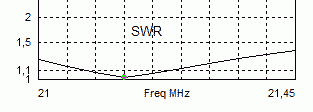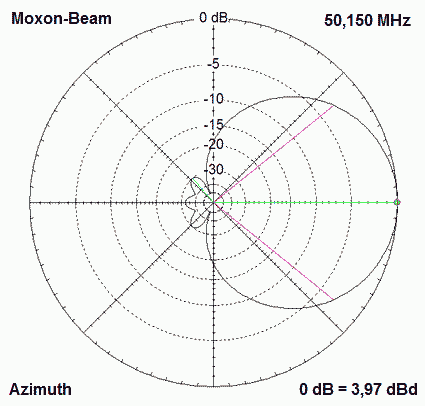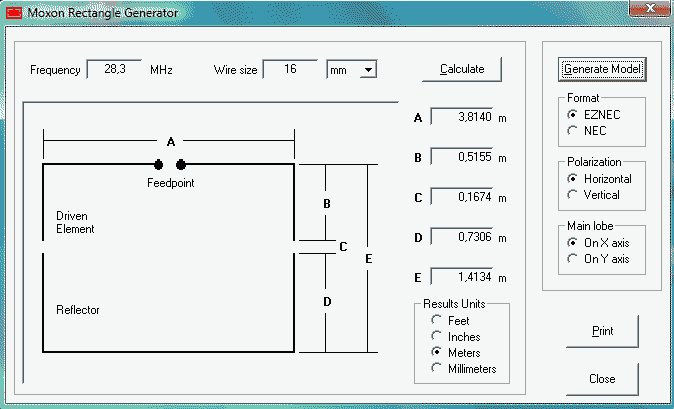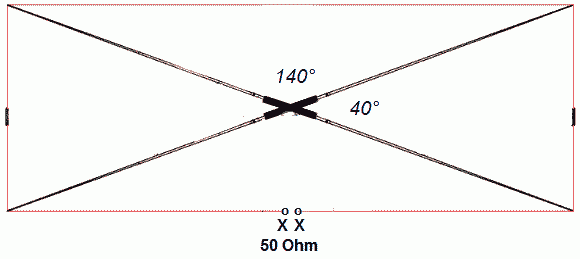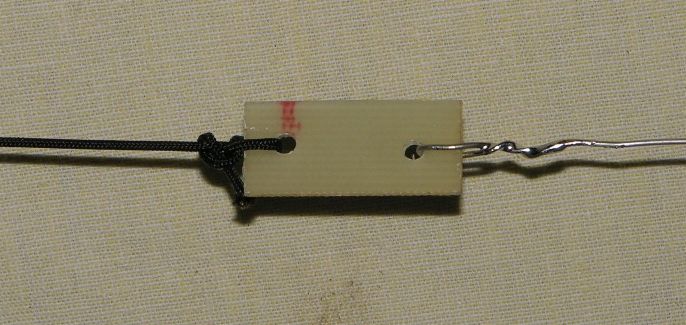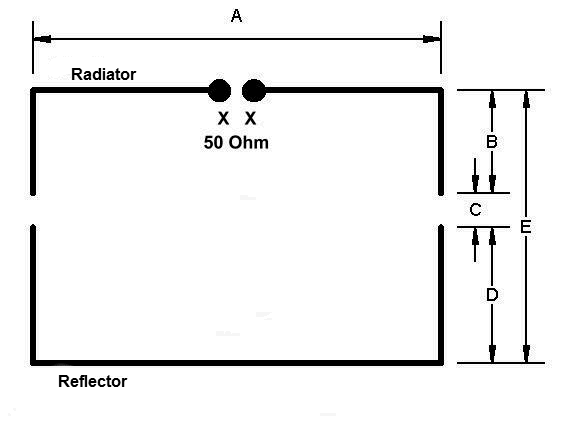 |
The Moxon-Beam was introduced by L. Moxon (G6XN) in his book "HF Antennas for all Locations" (RSGB- Publications, Great Britain 1993). This beam is a 2-Element-Yagi with radiator and reflector and reduced size to about 75% of a normal beam. The 2-Element-Yagi with reflector has normally a 0,2-lambda-boom and an impedance of 50 W. The Moxon-beam has a 0,18-lambda-boom and still 50 Ohm. This is a good impedance for wire- beams.The ends of the two elements are bended backward (radiator) or forward (reflector) and act as a capacitive load. That is much better than inductive loading with coils. So we have greater bandwidth and lower losses.Through the reduced size we get a 0,5-0,7 dB lower gain than with a fullsize beam. The construction of the beam is seen in the picture left. |
